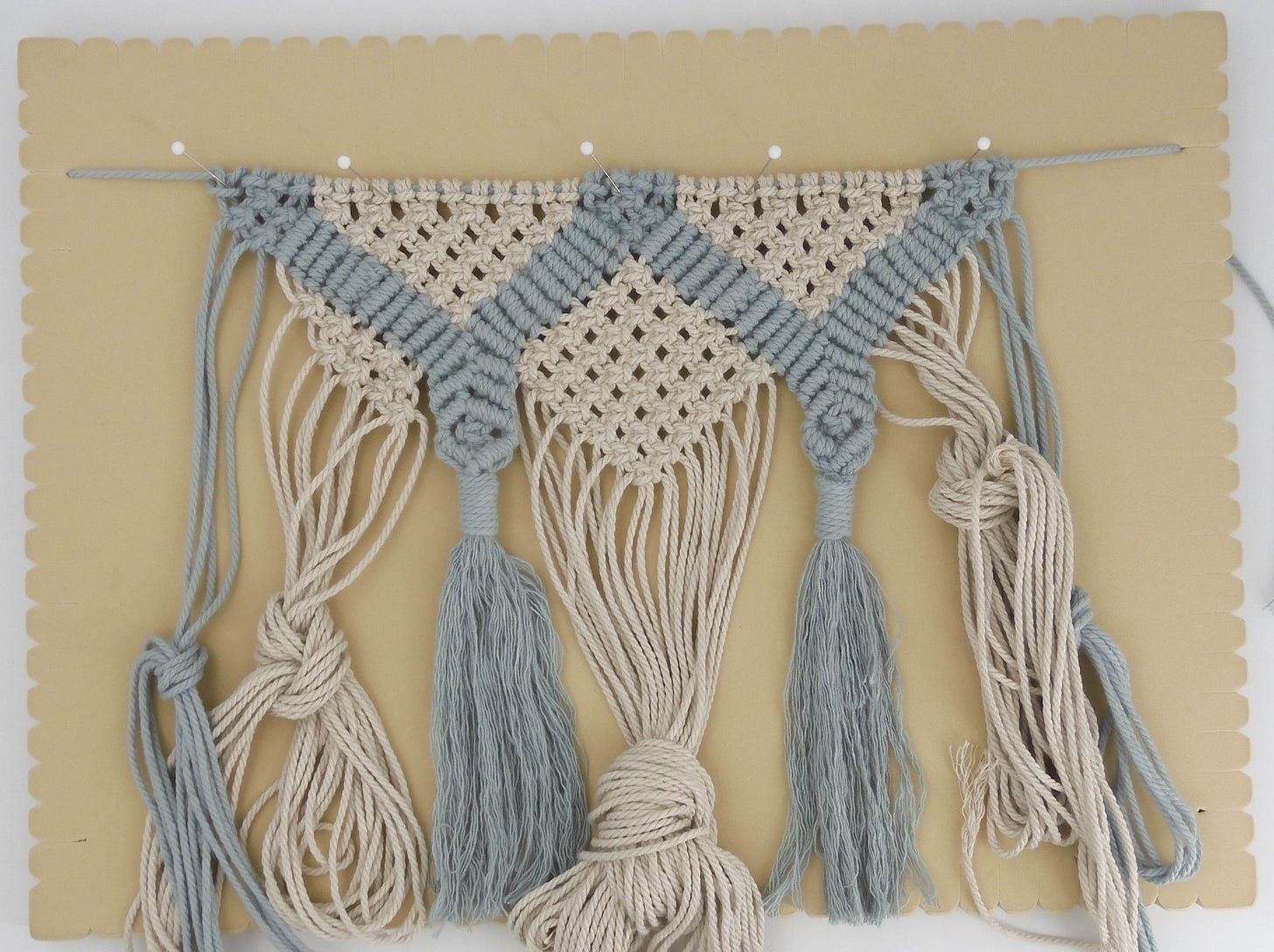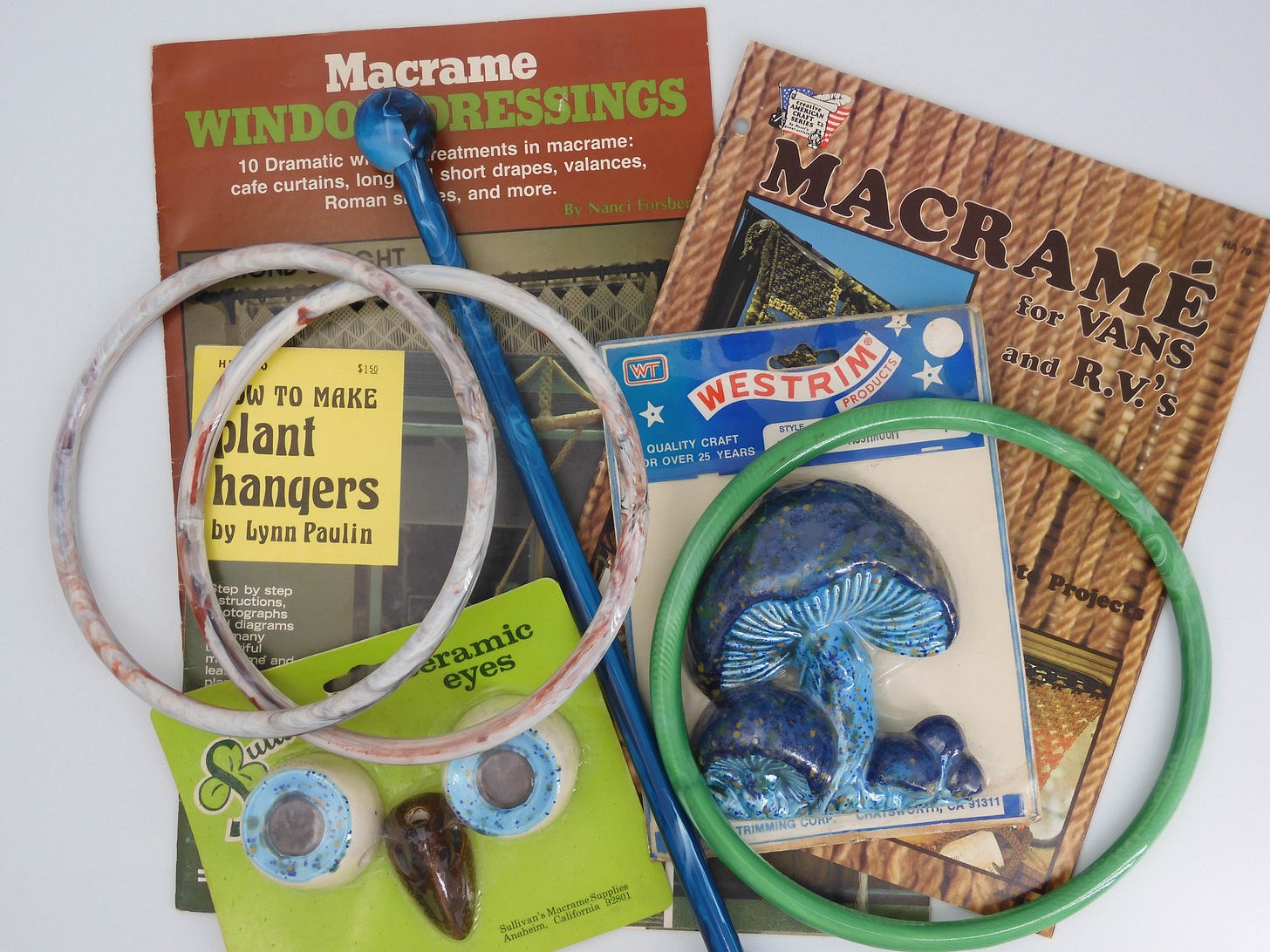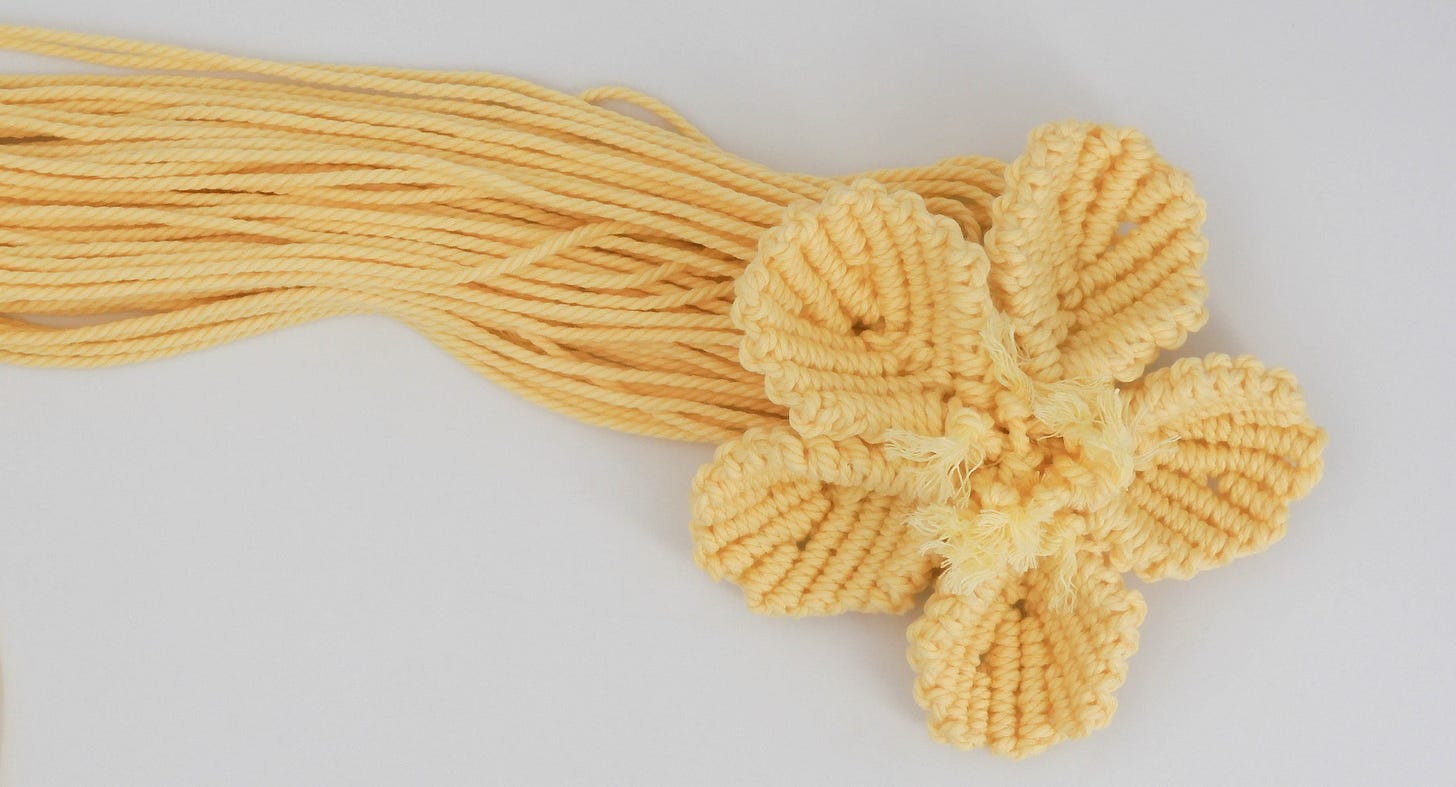Tied Up in Knots
Macrame “has recently come into fashion again ….it is at once so pretty and so strong, that it makes its own way into public favor.”
So wrote Jane Cunningham Croly in 1886 for the introduction to a macrame section in Jenny June’s Knitting and Crochet: A Guide to the Use of the Needle and Hook. But then, after a few years, the fashion for macrame disappeared.
Macrame surges in and out of fashion, re-emerging every 40 years or so. In 1926, Philip Herwig – who billed himself as the foremost square knot authority in America – declared “Square knotting does not need any introduction as a new work, but it does need introduction to new people.” Then, macrame disappeared again until it was rediscovered in the 1970s, brought back into fashion by hippies, back-to-the-earthers, and ladies magazines.
“Rediscovered” is an over-statement, of course. Herwig claimed the craft had been “a favorite diversion of the men of the United States Navy ever since there has been a Navy.” Designers and crafty historians date decorative knot-tying to Arabia in the 13th century. But the practice must go farther back; an article in a 1969 issue of Woman’s Day suggests it had origins “in Biblical times.”
I started thinking about macrame again when Sally regifted an ornament I had made in the mid-1970s. This past summer, I started tying knots again, exploring vintage patterns and new designers. Suddenly, I have a rope stash. (Like I needed another fiber stash, right?)

Psyche Untied – Craft Therapy
We tend to “nest” during widespread turmoil. After the financial crash of 2008, and again during the 2020-2021 pandemic, sales of fabric and craft supplies soared. We cut up fabric to make comfort quilts, raided our stashes to make masks for medical personnel. We picked up knitting needles to self-soothe and relieve stress. Through crafting, we take control of an uncontrollable situations.
Folks began taking notice of the therapeutic benefits derived from making things during and after the First World War. Writing in Critical Military Studies, Ana Carden-Coyne charts the beginnings of occupational therapy using “lap crafts” – creative activities that could be undertaken from a hospital bed as a method for treating soldiers physically and emotionally wounded by trench warfare.
Eight years after the war’s end, Philip Herwig observed “physicians of our leading hospitals, sanitariums, asylums and penal institutions recognized the great curative value of light and systematic occupations for bed patients and convalescents (including those suffering from mental diseases) …. [Macrame] rapidly became popular with occupational therapists, because it requires practically no equipment, is easy to learn, never becomes tiresome, and develops skill and originality, at the same time providing mild exercise and pleasant diversion.”
Clinical studies have shown that at the very least crafting reduces stress hormones. The U.S. Department of Defense endorses the value of craft therapy for rehabilitating motor skills and lessening suicidal tendencies.
Old Knots, New Designs
Given the popularity of macrame during the 1970s, it’s a little surprising that I don’t find more period pieces in the collectibles market. That dearth is probably caused not by the fragility of the material – in 1978, I made a curtain for Aunt Elbe that is now gracing a window in her granddaughter’s house. The 70s saw the beginning of many things, including throw-away culture and it’s likely that many macrame items simply were relegated to landfills.

What remains in abundance from the 1970s fad are pattern books and supplies. If you crave that retro look, check out the eBay store of btslivehere who offers a grand selection of 70s supplies, including patterns, Mar-bell plastics and ceramic beads. I don’t recommend using rope from the 1970s, unless you find it tightly sealed in the original packaging. Most of the vintage rope and string I find has become grimy from 50 years of storage and I’ve not found a good way to clean the fibers. For the examples shown in the illustrations, I purchased fiber from Ganxxet, a company offering eco-friendly rope and string.
Macrame uses a few basic knots, mostly hitches and square knots, so it’s not surprising that there seems to be little design evolution for patterns between 1880 and 1970. Curtain and valance patterns published in the 1913 edition of Priscilla’s Macrame Book look quite similar to the patterns published in 1973 by Nancy Forsberg in Macrame Window Dressings.

Today’s designers are taking those few simple knots and creating patterns with a contemporary look, coming up with swagged wall hangings and three-dimensional flowers. For contemporary designers, shop Etsy. I am particularly enamored of the patterns offered by White Owl Knot who has turned even simple plant holders into sweeping adornments. Windy Chin took the craft to its far reaches, setting out to learn a new knot every day for a year. She shares the results in The Year of Knots: Modern Projects, Inspiration, and Creative Reinvention, an elegant book that is part memoir and part how-to for unusual knots.
Summer is winding down and soon it will be time to put away the macrame plant holders made in June. As the weather cools, I’ll turn my attention to “indoor” crafts, like quilting a vintage Ohio Rose quilt top that Kathi found at a rummage sale. But when the seasons turn back toward the sun, I’ll be out on the deck knotting up a few more plant hangers. I might even try to tie that big Bicentennial Eagle.




